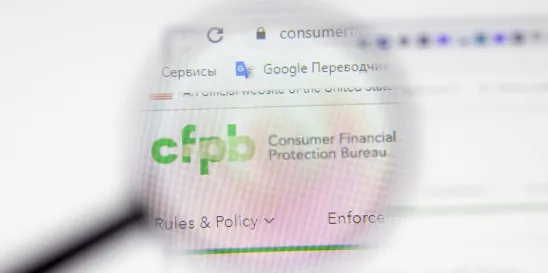This month, the Consumer Financial Protection Bureau (CFPB) started the new year by filing an amicus brief in an ongoing appeal in the First Circuit focusing on an interpretation of the Fair Debt Collection Practices Act (FDCPA), specifically 1692e. While FDCPA litigators await a decision on this issue, debt collectors can use this case as a reminder to understand how their technologies, like bankruptcy scrubs and letter logic, can prevent litigation like this case.
Background
In the case, Carrasquillo v. CICA Collection Agency, No. 23-1225 (1st Cir.), the debt collector sent a letter to the plaintiff during the pendency of the plaintiff's bankruptcy that stated 1) the debt was due and owing and 2) the plaintiff could be sued. The debtor filed suit against the collector, arguing that the letter violated 15 U.S. Code § 1692e because these statements were false due to the status of the debtor's bankruptcy at the time the letter was mailed.
CICA contended that the claim under 1692e was precluded as it originated from a violation of the Bankruptcy Code.
The district court took judicial notice of the bankruptcy proceedings of the debtor and observed the fact that the debt collector was not provided notice of the bankruptcy filing prior to sending the notice. In dismissing the case, the court carved out an exception to 1692e that the statement could not have been a false representation because it requires knowledge of the misrepresentation to be intentional. Additionally, the district court noted that the consumer had knowledge of the bankruptcy and could have notified the debt collector prior to the notice, placing the burden on the debtor. Because the court dismissed the claim, it declined to rule further on the bankruptcy preemption.
The CFPB asserts in its amicus filing that the district court erred by introducing a scienter (knowledge or intent of wrongdoing) requirement into 1692e. The CFPB’s interpretation of 1692e’s prohibition on debt collectors using “any false, deceptive, or misleading representation or means in connection with the collection of any debt” applies whether the representation is intentional or unintentional, which the CFPB argues is the prevailing view of the federal appellate courts in eight other cases.
Further, the CFPB highlights that the FDCPA includes a bona fide error defense in 1692k(c) to help debt collectors avoid liability if it can show “by a preponderance of evidence that the violation was not intentional and resulted from a bona fide error notwithstanding the maintenance of procedures reasonably adapted to avoid any such error.” (Emphasis added)
Compliance Takeaways
While the CFPB introduced the bona fide error defense as proof of Congress's intent for the FDCPA to cover unintentional violations, this filing should be viewed as an important reminder for compliance professionals at FDCPA-regulated companies to:
- Ensure policies and procedures to avoid violations are in place and up to date;
- Understand the capabilities and limitations of technology solutions like bankruptcy scrubs, and how data from those products interact with your letter and call logic; and
- Test the adequacy of these procedures and systems regularly as part of a robust compliance management system.



 />i
/>i
